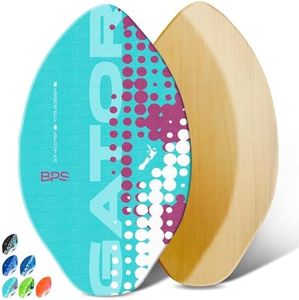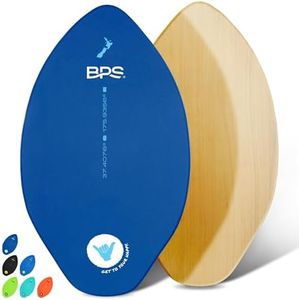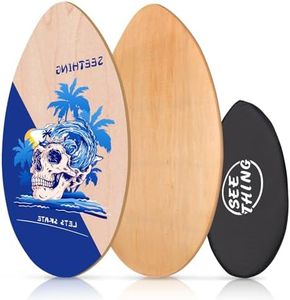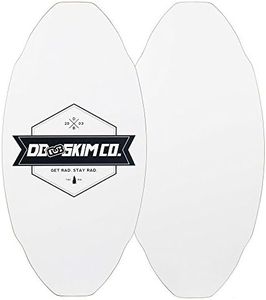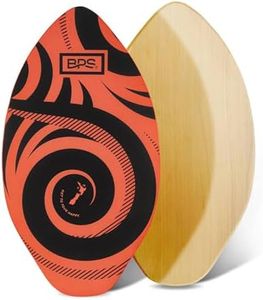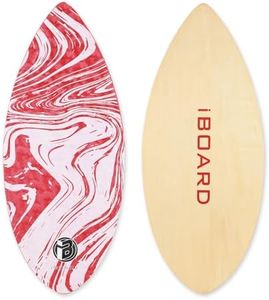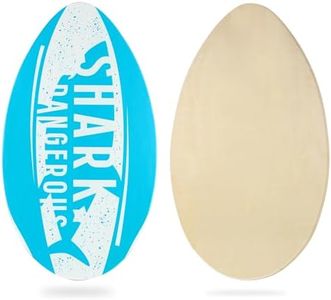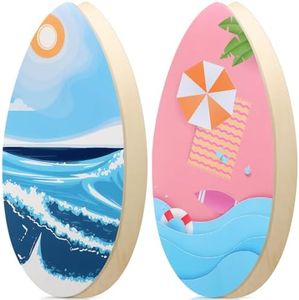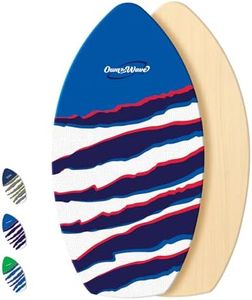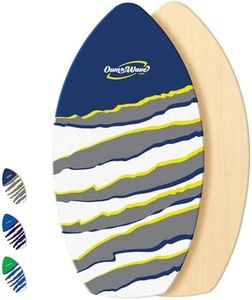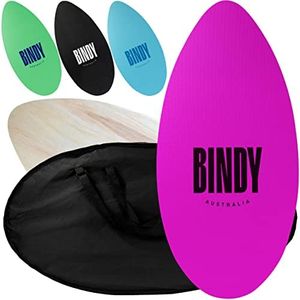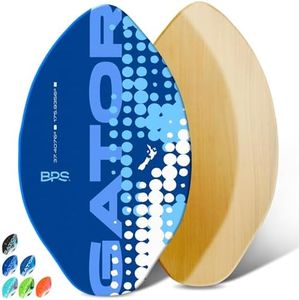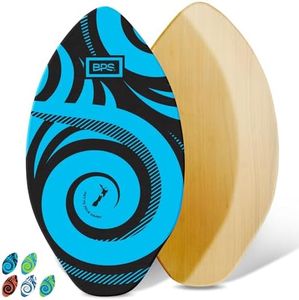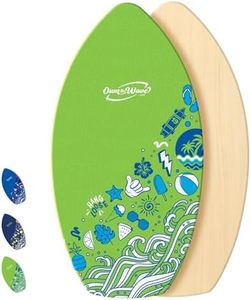We Use CookiesWe use cookies to enhance the security, performance,
functionality and for analytical and promotional activities. By continuing to browse this site you
are agreeing to our privacy policy
10 Best Skimboard For Beach
From leading brands and best sellers available on the web.Buying Guide for the Best Skimboard For Beach
Choosing the right skimboard for the beach comes down to understanding your experience level, the type of skimming you want to do, and the kind of beach you’ll use it on. The ideal skimboard should help you glide smoothly over the water, offer good control, and match your body weight and skill. Before buying, think about how you plan to use it—whether just for fun on the sand and shallow water or for catching waves. Getting familiar with the important specs will help you pick a board that’s not only enjoyable but also safe and comfortable.Board SizeBoard size refers to the length and width of the skimboard. This is a crucial spec because it affects stability, speed, and maneuverability. Generally, larger boards provide more float and stability, making them slower but easier to control, especially for beginners and heavier riders. Smaller boards, on the other hand, are lighter, faster, and better for tricks—but they require more skill to balance. To pick the right size, consider your body weight and experience. If you’re new or on the heavier side, opt for a longer and wider board. Lighter or more advanced users can go for smaller boards for better tricks and responsiveness.
Board MaterialThe material used to make the board impacts its durability, weight, and performance. Common materials include wood and foam. Wooden boards are heavier, more affordable, and great for flatland skimming (on the wet sand). Foam boards are lighter, more buoyant, and suitable for catching waves, but they can be more expensive. If you’re mostly skimming on flat, wet sand, a wooden board is enough. If you want to ride out to catch waves, a foam board is the better fit. Pick based on where you’ll skim most—sand or surf.
RockerThe rocker is the curve of the board from nose to tail when viewed from the side. A flat rocker means the board is mostly flat and glides well on flat water, making it better for shallow water and sand. A pronounced (steep) rocker lifts the nose more, helping you avoid nose-diving in choppy water and waves, but it’s slightly slower on calm water. If you plan to only skim on flat, shallow water, go for a flatter rocker. If you want to skim into waves or rougher water, choose a board with more rocker.
Board ShapeSkimboards come in different shapes, typically defined by the outline of the board. Wider boards offer greater stability and are best for beginners. Narrower, pointier boards turn and carve better, suiting more advanced users and wave riding. Think about your skill level and the kind of tricks or rides you want; opt for a wider shape for stability and learning, or a narrower one for agility and experienced riding.
Weight CapacityWeight capacity tells you the maximum rider weight the board can handle well. It’s important because an overloaded skimboard will sink, slow you down, and be hard to control, while a board that’s too big for your weight might feel clunky. Manufacturers usually provide weight guidelines based on board size. Always match your body weight to the recommended range so you can skim efficiently and safely.
Grip or TractionThe top of the skimboard might include built-in grip pads or textured surfaces, or require you to apply wax for grip. This feature is important because a good grip keeps your feet steady, prevents slipping, and helps you control your board better, especially during tricks or sharp turns. For beginners, a board with built-in grip is user-friendly. If you want more customization, or are used to waxing your board, you might not need built-in traction, but you should still plan to add wax for safety.
